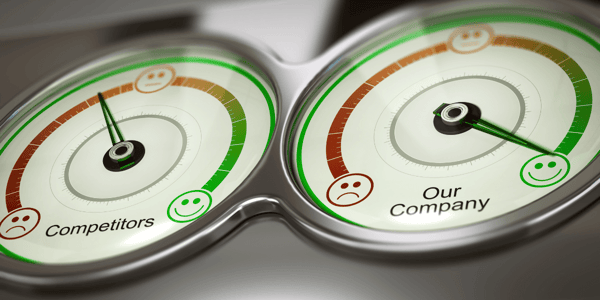
How These 8 Social Media Marketing Benchmarks Should Refine Your Strategy
Social listening is about your customer service and reputation management. It includes how fast you respond to customers and their issues, and what kinds of things they say about you in return.Social Listening
Your work in social listening is what informs the three other areas we're going to cover, so meeting the other industry benchmarks here sets you up for success later.
1. Reputation Score
Your reputation score determines how trustworthy your brand appears. It looks at various factors, including ratings, reviews, impressions, and accuracy. While not a perfect system, it's a relatively accurate way of illustrating the public's perception of your brand even if they don't know your exact number.
You can find your score through various sites like Reputation.com or SenderScore.org.
Reputation.com uses a 0-1,000 scale and acknowledges any score over 600 as good, with over 850 as "best in class." However, the typical industry standard hovers at 525.
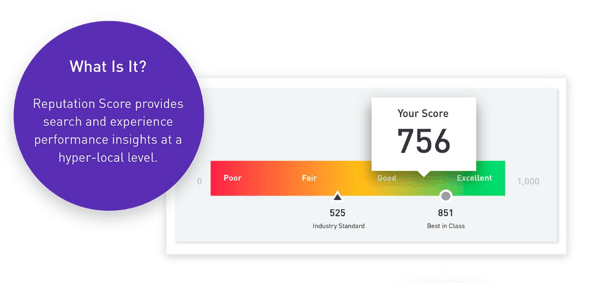
This could be an easy way to gain traction within your industry. If your reputation score is low, it means customers view your brand as less trustworthy. Until you strengthen your score, your other goals will remain out of reach since customers will remain less likely to associate with your brand.
To increase your score, diagnose the issue with your services. Many times, receiving customer feedback will offer insights that aren't apparent on review sites like Yelp. If you can receive candid responses, you'll be able to identify what issues consumers are facing. Then, you can develop methods to correct the problem for previous and future customers.
2. Retention Rate
If your customers are happy, they're going to keep coming back to you, whether that's for your products or the content you provide through all your platforms.
Windsor Circle built a benchmark report for four of the top industries of 2018. They found Apparel and Footware to have the highest retention rates at 32.7%. The three other industries in the study all performed around 26 to 28%.
A lower retention rate can mean a few things. Either 1. You're not meeting your customers' needs, 2. Someone else is doing it better, or 3. Your next offer isn't relevant to the consumer.
The simplest way to increase retention, again, is to receive and implement feedback from your customers. Ratings and reviews will give you an idea of how you're performing, and looking for keywords and phrases like "dislike this," "wish it had," or "needs" can give you specific insights on where to put your focus.
Social influencing is how you establish authority within you industry. This is accomplished by providing so much value to your audience that digital passerby can't help but stop to look.
The data measured for social influencing includes engagement, traffic, and awareness. This is the critical area every marketer wants to increase, and by knowing where the competition stands, you can align your strategy to achieve more significant results.
3. Engagement Rates
RivalIQ conducted a report that benchmarked 2018's social efforts from 12 of the largest industries. They calculated engagement rates as all "interactions divided by the total follower count." So this includes comments, likes, shares, and anything variants of those terms.
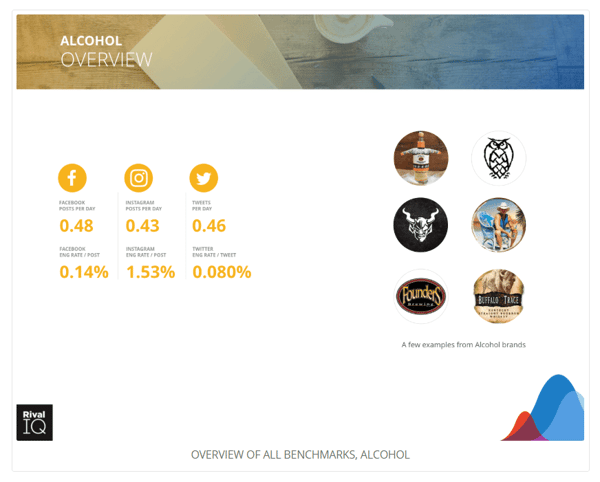
For Facebook, RivalIQ found an average engagement of .09% across all industries, with Alcohol edging ahead to .14%.
On Instagram, the 12 industries averaged 1.6%, with Higher Education seeing a whopping 3.96%.
And finally, on Twitter, engagement only reached .048%, with Alcohol taking the lead again.
Within their research, they further break down the number of posts each industry was making daily to see those numbers.
So, how can you use this for your brand? Since benchmarks are relative, these numbers give you insights on whether you're over or under-performing based on the competition. If you're below the industry average, it means you need to relook at your strategy, identifying what others are doing that's working. This could be the frequency of posts, the type of content, or the relevance of your material. If you're above, continue to determine why so you can double down on those efforts.
You can earn traffic through social media either from consumers engaging with your advertisements or through your company's content. It's essential to keep a bearing on how much traffic you're receiving per channel because it could show where your target demographic is hanging out and help you align your social media budget.
Brafton found B2B companies are earning 5.85% of their total traffic from social media, while B2C companies see 4.35%.
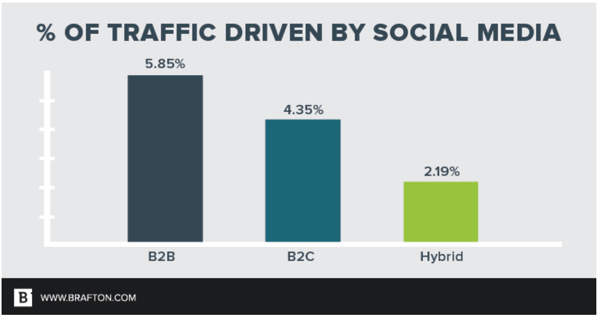
Social traffic is hard to judge without your competition offering their stats, but you with a tool like SEMrush you can see specifically what traffic sources your competition is pulling. It'll break down specific numbers, as well as the percentage of traffic from each source.

By knowing how you stack with social traffic, coupled with access to a tool like SEMrush, you can identify which competitors are outperforming you and gain insights on how to adjust your strategy. You can analyze all social platforms you have a presence on and increase performance with this data.
5. Brand Awareness
To increase the size of your potential customer base, you need to make them aware of your brand. While there are many ways to raise awareness of your brand, tracking it can be difficult. By honing in on a specific metric, however, you can build a better overall picture to work from.
Brandwatch Analytics can compile all your competitor's data, as well as yours, to create a Share of Voice analysis. This can be as broad as a general calculation or can be broken down by page type.
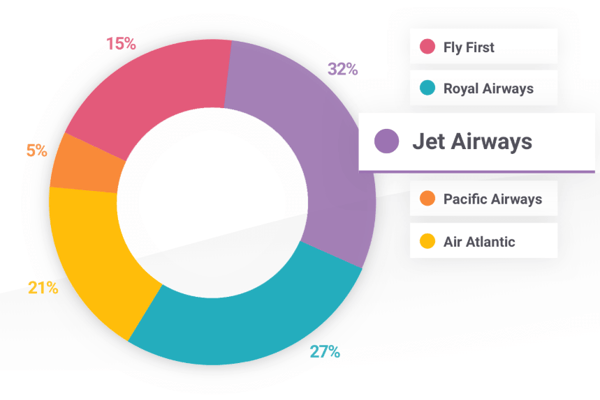
How large of a competition you're facing in your industry will determine what percentage of Share of Value is considered average. If you're one of 20, 25% Share of Voice is more significant than if you were one of four. Still, understanding how much of the market you own (as far as mentions go) compared to your peers can give you a better idea of where to shift your marketing efforts.
To increase your Share of Voice, consider distributing content in different forms. If you haven't moved to video, repurposing your blog's content into scripts is a quick method for increasing your potential for increased awareness. You can also look into influencer marketing to reach a broader audience, or keep it local by engaging your social media followers.
Social networking is about associating yourself with other brands, experts, and influencers to build partnerships. You can use their authority to earn more mentions and increase the chances of consumers becoming aware of your brand.
The main data you're looking for with benchmarks for social networking includes the number of inbound links pointing towards your site and your earned media mentions.
6. Inbound Links
Social media gives you another channel to direct traffic towards your website, and while the total number of inbound links you have isn't limited to social platforms, the aggregate data is still useful.
Many sites have published "Ultimate Guides" on link building, but QuickSprout is well known for their strategy.
Because there are so many variables, it's nearly impossible to find an industry average you can benchmark. Instead, you can do some quick research on your competitors using tools like SEMRush, Moz, and Ahrefs.

With these, you can input domains of your rival competition and receive the count of backlinks pointing to their site. By gathering info on as many competitors as you can to, you can build a benchmark that's specific to your industry and niche. It also lets you focus on the competitors more closely ranked to your site.
QuickSprout recommends increasing your inbound link creation monthly, especially for newer sites. This keeps the risk of penalties from Google off your back and lets you join the best of them faster.
Don't fall into the misconception that more is always better. With the tools above, you can gain insights into which links are actually damaging your reputation. And while you're looking, consider adding to your own site. Create internal links within valuable content to reap some of the rewards.
7. Earned Media Mentions
Earning mentions is difficult work unless you're providing so much value you can disrupt the market. Banking on content going viral or cheap tricks elevating your fame won't get you where you want to be. Taking a customer-centric approach to marketing, and making it about the consumer's journey towards making a purchase will.
It's also important to note, the more specific your content, as in the more relevant to the consumer, the fewer mentions you may have. Brands that appeal to broader audiences will always have a better chance at earning mentions because they have more people interested. Still, the quality of leads gained from an ultra-specific offer is significantly higher than the opposite.
Social Mention is a useful tool for compiling data. Since media mentions can follow trends and aren't always a good thing, being able to research similar competitors at various times is essential to having useable data.
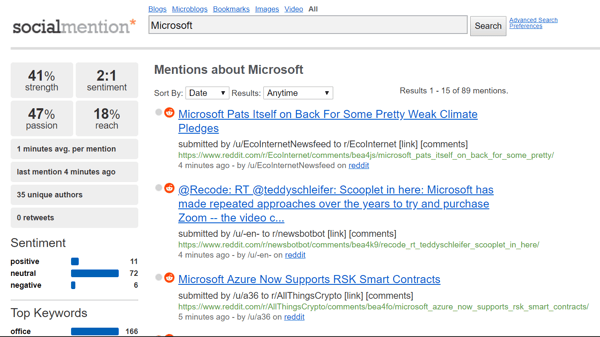
Social Mention will give you show how often a term is mentioned and shows the traffic source. The site will present you with the sentiment of the term you've searched. Based on Reputation.com's reputation scoring, a sentiment of 5:1, five positive mentions to every one negative, would be at par.
Another useful tool is Hootsuite. You can set up multiple tabs to display whichever mentions you've deemed important, giving you real-time updates on yourself and the competition.
Using both of these sites, over time, you'll construct a better picture where the benchmarks with social mentions are in your industry.
Since mentions could be good and bad, what you do with this data is important. If your sentiment is negative, work to increase your reputation. If your sentiment is good, work to increase the chatter about your brand. There's no sense spending your marketing budget to increase mentions when customers aren't saying good things about you.
Social selling is how you generate leads and sales from anyone who's interacted with your brand. Goals include leads generated, cross-sells or upsells achieved, and buyer frequency, but the latter two matter entirely on your company's selling structure. Because of this, the primary benchmark in social selling is your leads generated.
8. Leads Generated
There are different levels of leads when it comes to social selling, so we'll breakdown a couple.
First, subscriptions to your social profiles are the easiest to acquire, but the least likely to convert. There's no commitment from the lead, but they have given you the ability to appear in their feeds, and that significance shouldn't be neglected.
TrackMaven conducted a study that looked nearly 30,000 brands over the top social platforms. The median annual follower growth of brands across all the networks is 42%. Each platform individually saw around 23%, which is a more useful baseline if you've limited your social presence.
If you're under the benchmark, increase the amount of valuable ungated content on your page. Keep it relevant to your audience, focus on value first, and the number should climb.
The next type of lead is the one that joins your actual email list. These are the more qualified leads that are offering you something besides just a number on your page. They saw value in your offer and traded their contact info for it.
Sumo gathered data from their tools and found the average email opt-in rate was 1.95%. The top 10%, however, saw an average of 4.77%. So, if you can keep your rate at about 2%, you're doing something well.
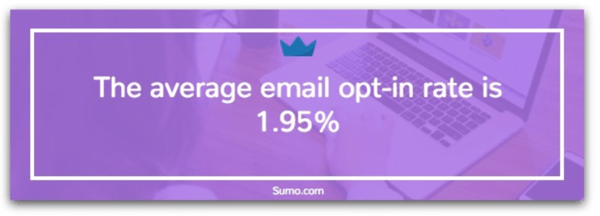
The difficulty with tracking email list subscriptions in your social campaign is lack of convenience. On some platforms, followers can join the list directly from your profile. While convenient, these opt-ins normally perform worse than others.
In reality, a majority of consumers are going to click a post that leads to a landing page. Now, you had to convince them once to get the first click, so if your landing page isn't optimized for conversions, you'll risk losing them here. Fortunately, you can track the which links are sending them there to understand which pages need work, but which social posts are working well.
With your email list, if you see results under the benchmark, study what your competition is doing and implement A/B tests after determining what may be useful to your offers. If you see better results, continue to optimize, but take notes on what the rest of your industry is doing that you may be out-performing.
Understanding the whole picture starts by having benchmarks to base your efforts on. If you're aware of the performance of your industry and peers, you can realign your strategy to achieve better results.
Use the tools interspersed above to fine-tune the benchmarks you're looking for. Alcohol or Footware are much larger industries than you're likely competing with. Make the data fit your needs and actually consider what it means for your strategy.
There are plenty of other social media apps and tools you can use, as well. Many will help automate tasks, multiplying your effectiveness by doing more in less time. And that, let's you focus on how you're going to surpass those benchmarks.




